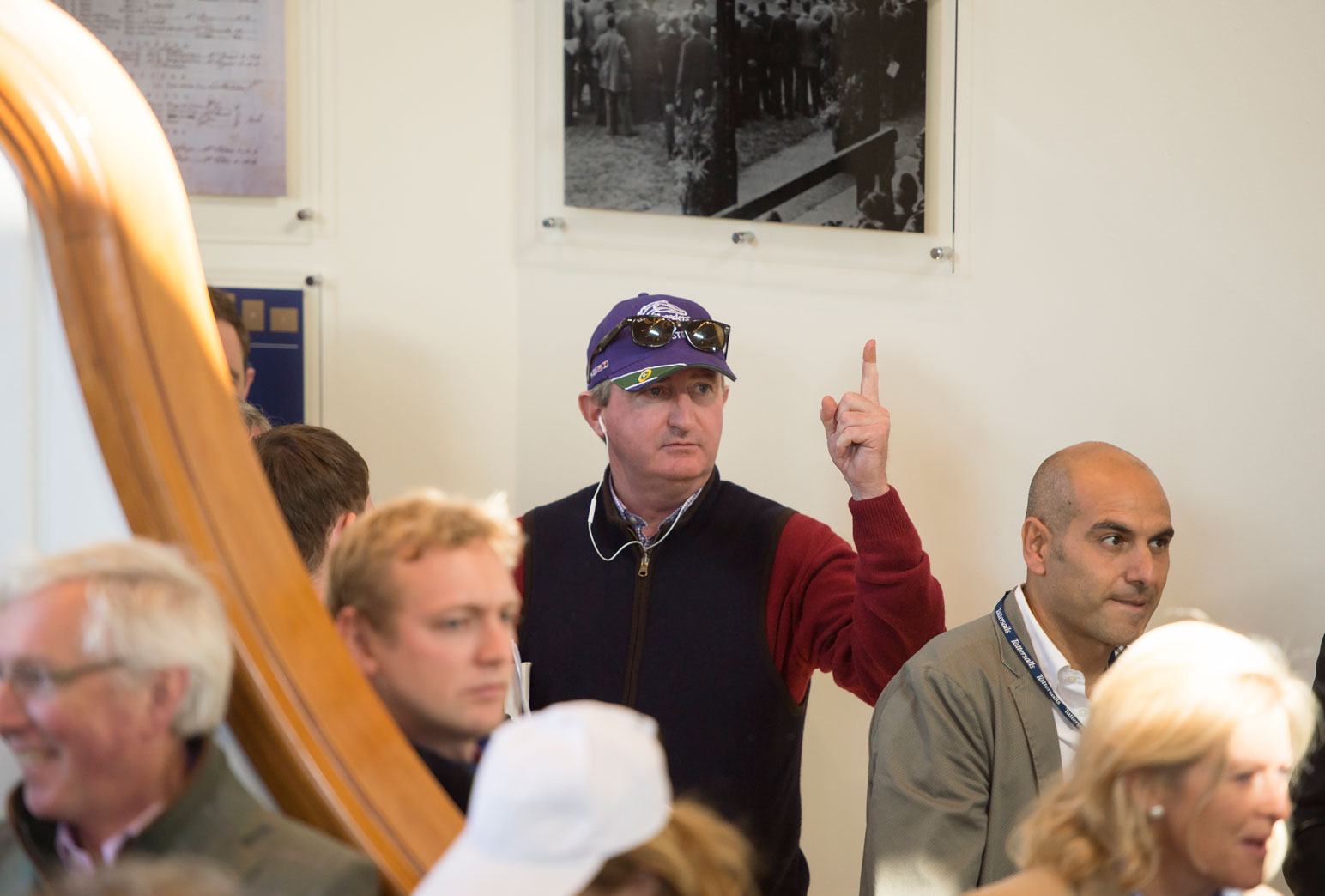By Bill Oppenheim
In a three-day sale which is alphabetical by dam start to finish, as Keeneland September was, and this week's Tattersalls October 1 Yearling Sale is, in theory you should be able to multiply the first day's results by three to see how the sale should turn out by the end of play tomorrow. Yesterday's opening session went well. With 7% more horses catalogued for this year's sale, 136 yearlings sold for a gross of 31,240,000 gns, and an average of 229,706 gns. I know all the other comparisons will be made to the first day last year, but as you know I don't really like to do that; what I do is multiply the opening day figures by three to see how they would compare to last year if the next two days replicate yesterday. They never do, of course, but nonetheless it seems to me to be a fairer comparison.
The 136 yearlings sold yesterday comprised 74.3% of the Tuesday catalogue, 1.8% higher than the 72.5% clearance rate from the catalogue for the whole sale last year. The 136 times three projects out to 408 yearlings which would be sold by the end of the sale, which would be nearly 10% more yearlings selling in 2016 than in 2015. If we multiply Tuesday's 31,240,000 gns gross times three it projects out to 93,720,000, which would be almost an 11-million gns increase from 2015, or an increase of 13%. Of course there was a 2.6 million gns sale yesterday, and if that proves to be the eventual sale-topper, you could see the sale grossing more like 91-million gns, which would still be a 10% increase from 2015. In any case, to increase the catalogue for your flagship sale, hold or slightly increase the average, and have a gross increase by 10%–in today's decidedly shaky economic climate, that would have to be regarded as a win. Of course, it remains to be seen what will actually happen Wednesday and Thursday, but so far, so good, I'm sure is the sales company view after Day 1. Two other notes: yesterday's median was 145,000 gns, down marginally from the median in both 2014 and 2015, which was 150,000 gns; but that also suggests the Book 1 market is holding its own. Second note: the 20% drop in sterling vs. the dollar seemed to make absolutely no difference. No doubt American buyers were happy to see it, but there was no suggestion that the drop really influenced prices significantly.
The big story on the sire front was Darley's flagship of its own, Dubawi. He had eight yearlings average 853,125 gns. Five colts sold yesterday for an average of 1,100,000 gns, including of course the 2.6-million gns sale-topper, while three fillies averaged 441,667 gns. John Ferguson bought all five of the Dubawi colts, and one of the fillies. Four other sires with two or more sold averaged over 300,000 gns: Juddmonte's Frankel (4/468,750 gns); Coolmore's Galileo (7/442,143 gns); Darley's Shamardal (5/326,000 gns); and Juddmonte's veteran, Dansili (4/316,250 gns). Among sires with their first yearlings selling, Coolmore's Camelot had five sell, for an average of 210,000 gns; Declaration of War, from his one Irish crop before his transfer to Coolmore's Kentucky arm, Ashford, had two average 190,000 gns yesterday. Darley Kildangan's Dawn Approach had five average 129,400; while Society Rock, who stood at Tally-Ho Stud in Ireland, but died earlier this year, had three yearlings average 123,333 gns yesterday.
This column will be back on Saturday with a recap of the whole Book 1 sale.
Contact Bill Oppenheim at bopp@erb.com (cc suefinley@thetdn.com).
Not a subscriber? Click here to sign up for the daily PDF or alerts.






